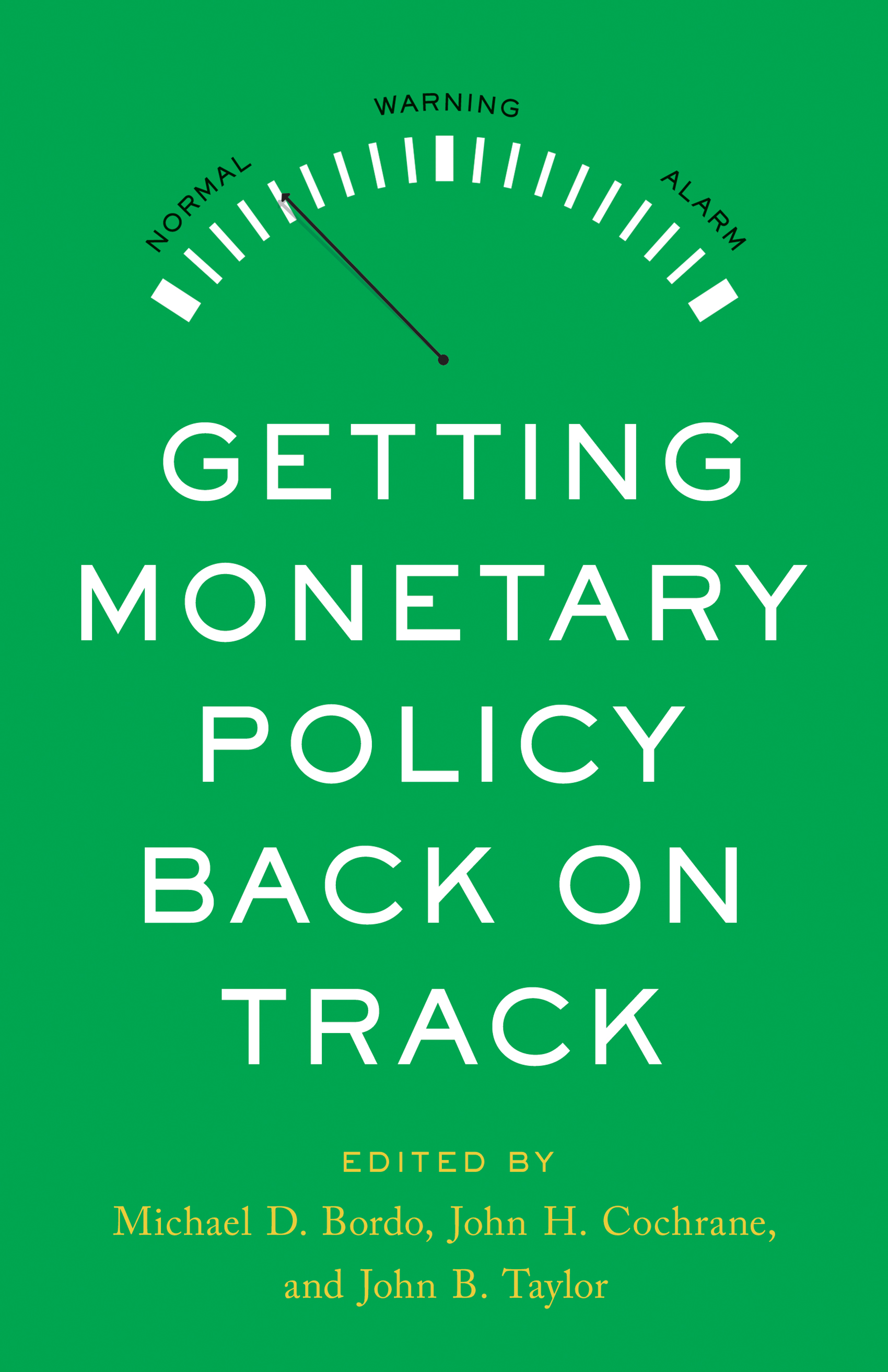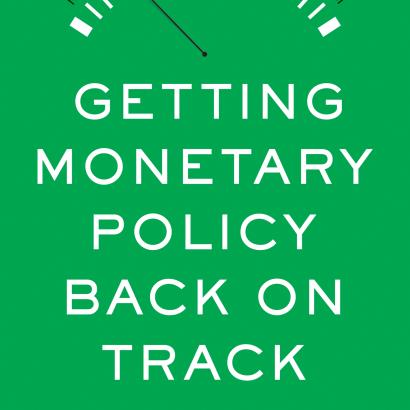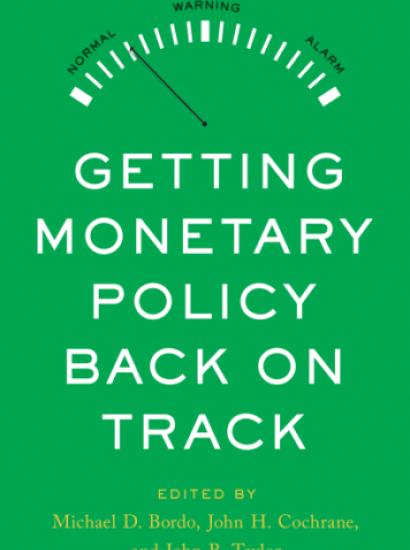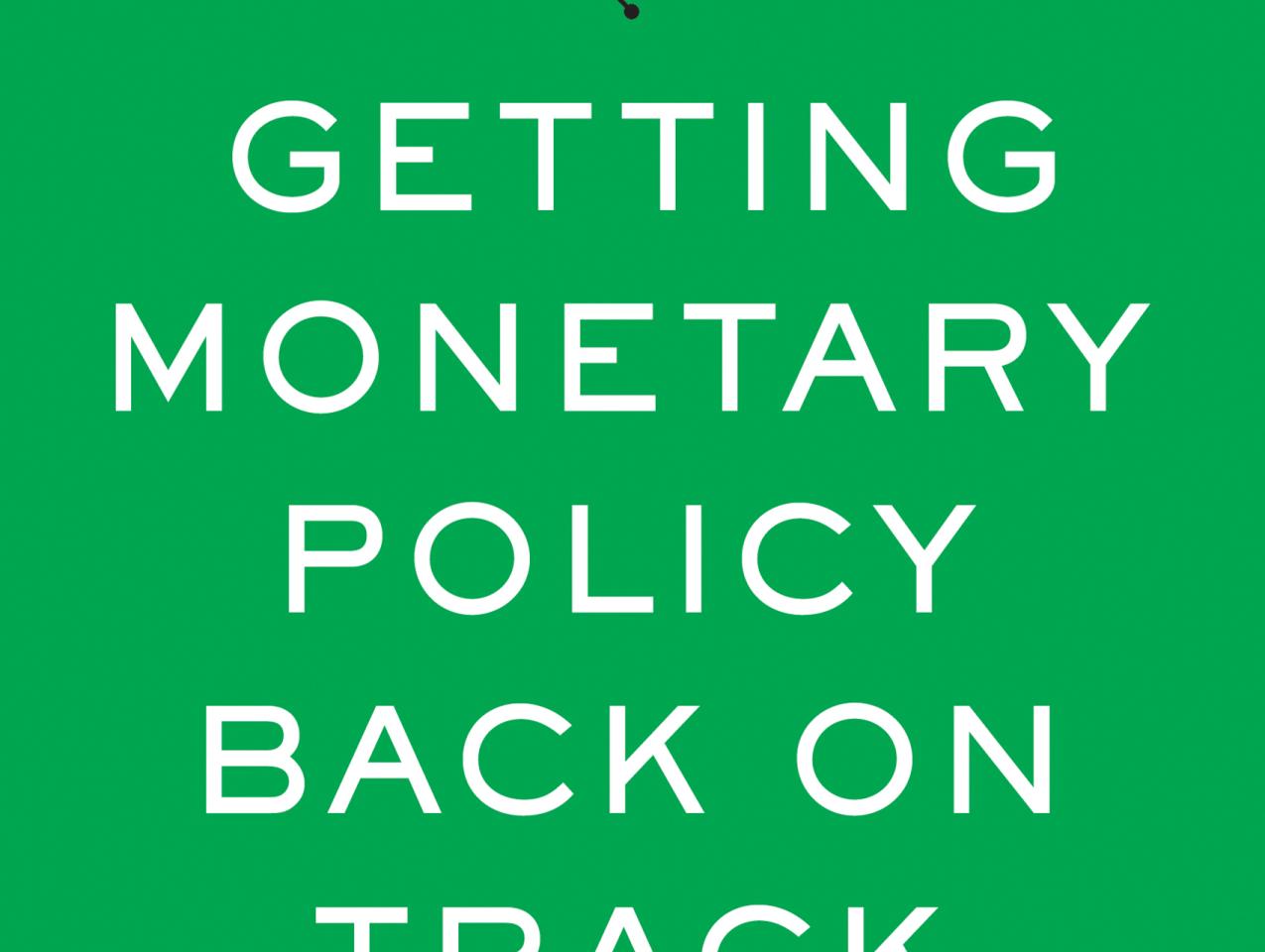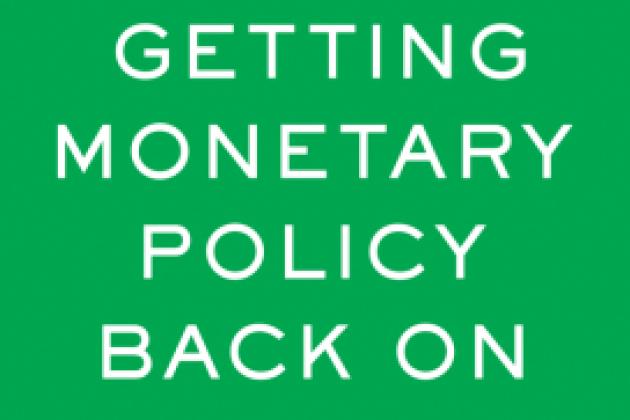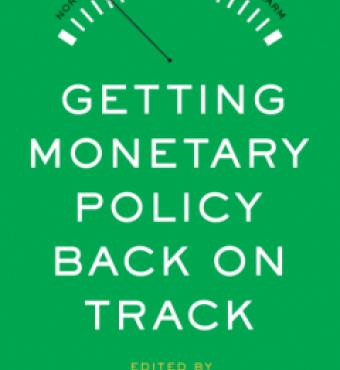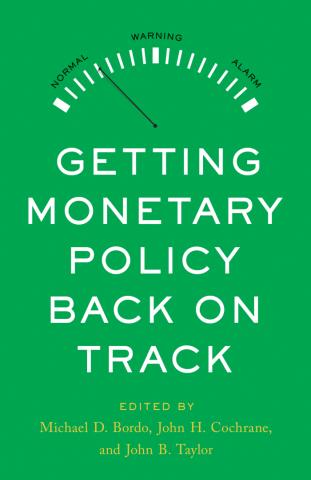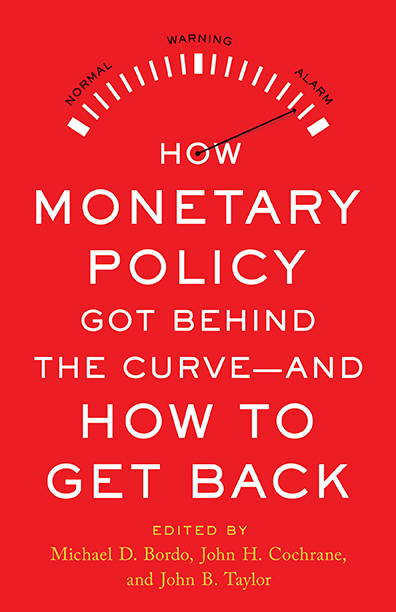- Economics
- Monetary Policy
- Answering Challenges to Advanced Economies
In May 2023, the world’s top economic policymakers and academics convened at the Hoover Institution for the annual Monetary Policy Conference. They met at a tumultuous time: the previous year, inflation had surged, and some believed the Federal Reserve was slow to react. What was behind this surge, and why did the Fed fail to forecast inflation, or perceive it when it happened? Participants considered whether the sluggish response made the situation worse, and how to get inflation back under control.
This volume presents the full proceedings from this conference—the presentations, responses, and discussions. In it, participants debate the meaning of getting monetary policy “back on track,” the significance of recent bank failures, and how to improve forecasting and oversight. A persistent underlying question is whether the Fed should follow a rule-like monetary policy, which maintains predictability in response to fluctuating inflation, GDP, and employment rates. Presenters discuss this issue as they recognize the thirtieth anniversary of the Taylor rule, an important guide to practical monetary policy.
Other topics include a five-century history of central bank balance sheets, inflation targeting in Japan, and lessons from Latin America. Together, these proceedings illustrate and dissect the interaction of financial regulation and monetary policy.
Praise for How Monetary Policy Got Behind the Curve—and How to Get Back
“An invaluable guide to understanding and resolving the current surge in inflation.”
—Mervyn King, former governor, Bank of England
“This timely conference volume encompasses a broad examination of current key monetary policy challenges. Experts provide insights from differing perspectives about the Fed’s belated move away from the zero lower bound, and about how the Fed can again reach its inflation target. Contributors include both current and former Fed officials.”
—John Lipsky, senior fellow, Foreign Policy Institute, School of Advanced International Studies, Johns Hopkins University, and former first deputy managing director, International Monetary Fund
“This timely and substantive volume is simply a must-read for anyone interested in the way forward for US monetary policy. The volume draws on the insights of current and former Fed officials as well as the expertise and insights offered by a who’s who of academic scholars and financial market participants. The essays are uniformly rigorous and accessible.”
—Richard Clarida, C. Lowell Harriss Professor of Economics and International Affairs, Columbia University
Praise for Getting Monetary Policy Back on Track
“An outstanding conference analyzing the sources of the highest US inflation in forty years and the macroeconomic policies necessary to return inflation to target.”
—James Bullard, dean, Daniels School of Business, Purdue University, and former president and CEO, Federal Reserve Bank of St. Louis
“In this wonderful volume, leading thinkers provide their cutting-edge insights into resolving current and thorny monetary policy issues. . . . Highly recommended.”
—Harald Uhlig, Bruce Allen and Barbara Ritzenthaler Professor in Economics and the College, Kenneth C. Griffin Department of Economics, University of Chicago
“Anyone interested in monetary policy and the challenges raised by the surge in inflation during 2021 and 2022 will profit from reading this timely volume.”
—Carl E. Walsh, Distinguished Professor of Economics Emeritus, University of California, Santa Cruz
Praise for Getting Global Monetary Policy on Track
“This outstanding volume is packed with extremely useful insights from many of the foremost experts serving on the front lines of public policy about the recent performance of central banks and the challenges ahead. It is especially timely.”
—Mark G. Duggan, Wayne and Jodi Cooperman Professor of Economics, Stanford University, and former Trione Director, Stanford Institute for Economic Policy Research
“This excellent volume is essential for understanding the recent history of monetary policy and our path forward. Current and former Fed officials and leading academics all offer valuable insight into the consequential policy questions raised by the events of the last three years. Highly recommended.”
—Randal Quarles, chairman and founder, Cynosure Group, and former vice chairman of the Federal Reserve System
“The Hoover monetary policy series is a ‘must read’ for all academics, central bankers, and market professionals who are looking for in-depth analysis together with a broad perspective on global monetary policy before, during, and after the surge of inflation.”
—Volker Wieland, Endowed Chair of Monetary Economics and managing director, Institute for Monetary and Financial Stability, Goethe University, Frankfurt
Preface
Michael D. Bordo, John H. Cochrane, and John B. Taylor
1. Introductory Remarks to the Conference
Condoleezza Rice
Thirty-Year Anniversary of the Taylor Rule
2. The Taylor Rule at Thirty
Richard H. Clarida
3. Naming the Taylor Rule
John Lipsky
4. The Taylor Rule at Thirty: Still Useful to Get the Fed Back on Track
Volker Wieland
Introductory Remarks: John H. Cochrane
General Discussion: Harald Uhlig, David H. Papell, Richard H. Clarida, Volker Wieland, Sebastian Edwards, Andrew T. Levin, Christopher Erceg, Brian Sack, Michael J. Boskin, John Lipsky
Financial Regulation: Silicon Valley Bank and Beyond
5. Silicon Valley Bank and Beyond: Regulating for Liquidity
Darrell Duffie
6. Silicon Valley Bank: What Happened? What Should We Do about It?
Randal Quarles
7. What We Can Learn about Financial Regulation from Silicon Valley Bank’s Collapse and Beyond
Amit Seru
Introductory Remarks: Anat R. Admati
General Discussion: Randal Quarles, Darrell Duffie, Michael J. Boskin, Michael D. Bordo, William R. Nelson, Amit Seru, James Bullard, Harald Uhlig
Disinflation and the Stock Market
8. Disinflation and the Stock Market: Third-World Lessons for First-World Monetary Policy
Anusha Chari and Peter Blair Henry
Discussant Remarks: Joshua D. Rauh
Introductory Remarks: William R. Nelson
General Discussion: Peter Blair Henry, John H. Cochrane, Andrew Filardo, Sebastian Edwards, James Bullard, Michael D. Bordo, Andrew T. Levin, Peter Q. Blair, John A. Gunn
Inflation Targeting in Japan, 2013–2023
9. Inflation Targeting in Japan, 2013–2023
Haruhiko Kuroda
Introductory Remarks: John B. Taylor
General Discussion: Sebastian Edwards, Haruhiko Kuroda, Beat Siegenthaler
10. Five Centuries of Central Bank Balance Sheets: A Primer
Niall Ferguson, Paul Schmelzing, Martin Kornejew, and Moritz Schularick
Discussant Remarks: Barry Eichengreen
Introductory Remarks: Michael D. Bordo
General Discussion: Niall Ferguson, Paul Schmelzing, Jeffrey M. Lacker, Andrew T. Levin, Christopher Erceg, Krishna Guha
Forecasting Inflation and Output
11. The Fed: Bad Forecasts and Misguided Monetary Policy
Mickey D. Levy
Discussant Remarks: Steven J. Davis
Introductory Remarks: James A. Wilcox
General Discussion: Richard H. Clarida, James Bullard, Andrew T. Levin, John H. Cochrane, Jeffrey M. Lacker, Volker Wieland, Terry L. Anderson, Mickey D. Levy, Steven J. Davis
Toward a Monetary Policy Strategy
12. The Monetary-Fiscal Policy Mix and Central Bank Strategy
James Bullard
13. On the Assessment of Current Monetary Policy
Philip N. Jefferson
14. The Fed Should Improve Communications by Talking about Systematic Policy Rules
Jeffrey M. Lacker and Charles I. Plosser
Introductory Remarks: John B. Taylor 371
General Discussion: Mickey D. Levy, James Bullard, Charles Siguler, Jeffrey M. Lacker, William R. Nelson, Andrew T. Levin, Krishna Guha, Philip N. Jefferson
15. Latin American Inflation and Chile’s Market-Oriented Reforms
Sebastian Edwards
Introductory Remarks: John B. Taylor
General Discussion: Steven J. Davis, Sebastian Edwards







